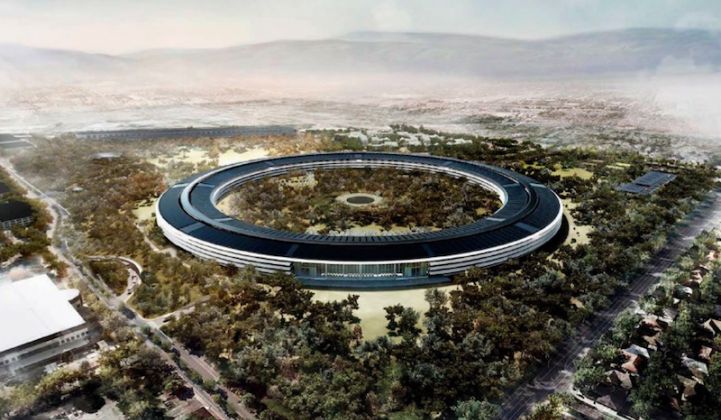Sometimes, we write articles that pose rhetorical questions in the title. This time, I have real questions and offer some possible answers.
Here’s a little background. Several weeks ago, to great fanfare, Apple and First Solar announced that Apple was paying $848 million for 25 years' worth of the output of a 130-megawatt block of First Solar’s California Flats project in southeast Monterey County. (The other portion of the project is under contract to PG&E.) First Solar’s press release heralded this as the “industry’s largest commercial solar deal,” and Tim Cook noted that the solar electricity would offset a lot of Apple’s California consumption.
My husband (who also works in the energy industry) and I took this up at the dinner table, much to our kids’ annoyance. My husband did some quick math, and then grabbed a calculator to do the math again. He wanted to make sure he hadn’t screwed up. His calculations suggested that Apple had paid a significantly higher price compared to other recently announced power-purchase agreements for solar.
He took the reported amount Apple was paying and divided it by an estimate of how much electricity the company would be buying. He guessed that the plant would have a capacity factor of 30 percent and hence produce 342,000 megawatt-hours per year (.3 x 130 megawatts x 8,760 hours/year), or approximately 8.5 million megawatt-hours over the life of the contract. Assuming that the reported contract value reflects the undiscounted sum of the payments under the contract, this yields an average price of approximately $100/megawatt-hour ($848 million/8.5 million megawatt-hours).
My husband was surprised because prices for other recent solar deals have hovered around $60 per megawatt-hour. The industry collectively cooed over a recent 25-year deal signed by Austin Energy to buy solar for $50 per megawatt-hour.
A reporter for Forbes did a similar calculation. He used a higher capacity factor -- 33 percent -- and still seems surprised that Apple paid so much. He concludes, however, that it’s not a horrible move by Apple given that future prices for utility-supplied power may go up.
My guess is that Apple did not overpay. It is, after all, Apple.
Here are a some possible explanations.
1. Apple is receiving the tax equity in addition to the electricity.
What does this mean? Through the end of 2016, a business that invests in a solar project is allowed to take 30 percent of the project cost as a tax credit. As I understand it (see here for a great explanation), this means that if a project costs $100 million, it will generate $30 million in potential tax savings through the federal Investment Tax Credit (ITC). The problem is that First Solar is unlikely to have enough profits to take advantage of all the tax credits its projects generate. Historically, solar companies have sold the tax credits to banks or others in the financial sector, but, according to some reports, demand for what’s known as “tax equity” is drying up.
So, one possibility is that at least a share of what Apple bought was the tax equity on its 130 megawatts. Accounting for this could make the price the company paid much more reasonable. For instance, if Apple bought all the tax equity on the 130 megawatts, then we should think of the price it is paying for electricity as just 70 percent of the total $850 million, since it will be able to use 30 percent of the $850 million to offset future tax liabilities.
Apple also may be able to obtain tax benefits from a share of the accelerated depreciation for which solar projects are eligible.
This is where Google comes in. Late last week, Google announced that it was investing $300 million in a fund created by Solar City. Some of the press on this deal said it was structured to allow Google to get the tax equity, which makes me more likely to believe that Apple got a similar deal with First Solar.
If this is what’s really happening, the headlines citing Apple’s $848 million purchase of solar-powered electricity are a bit misleading, at least as I see it. Sure, Apple is paying $848 million to First Solar, and part of what it’s getting is electricity, but it’s also getting the ability to avoid paying taxes in the future. To me, this is like saying I paid $10 for a sandwich, and neglecting to mention that I also got $3 back in change. Counter to First Solar’s press release, this would not just be a solar deal, but a solar and tax deal.
I can understand why companies like Apple might not boast about buying the right to pay lower taxes. It’s not in any way nefarious -- and could even help solar companies by keeping the market for the tax equity competitive -- but it doesn’t burnish the purchasing company's green image in the same way that buying solar electricity to power its data centers does.
2. Something else is missing. Apple is getting something else out of the deal?
3. Apple did screw up. We all make mistakes, even big, smart companies.
Personally, I put my money on something along the lines of choice No. 1.
***
Catherine Wolfram is the Cora Jane Flood Professor of Business Administration and Faculty Director at the Haas School of Business at the University of California at Berkeley.
Reprinted with permission. Original column appears here.



